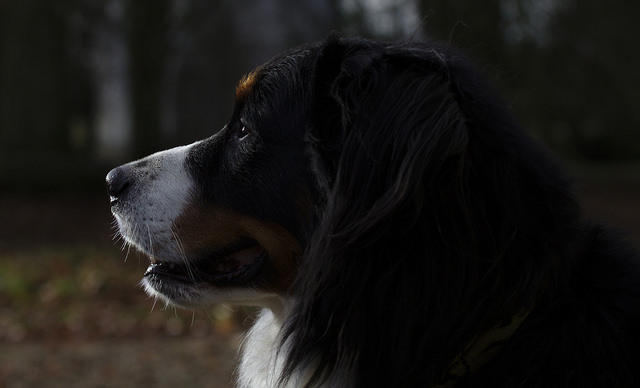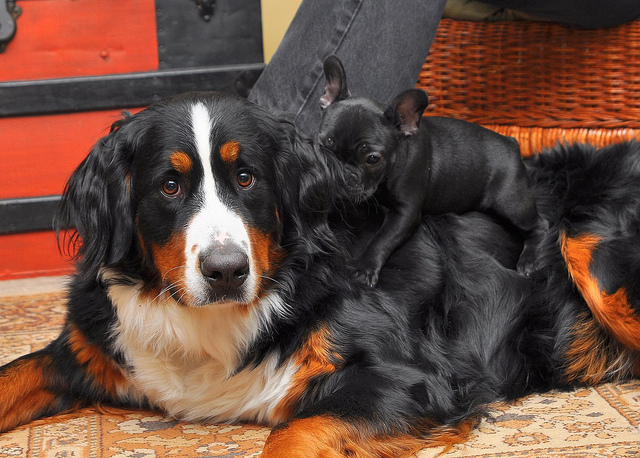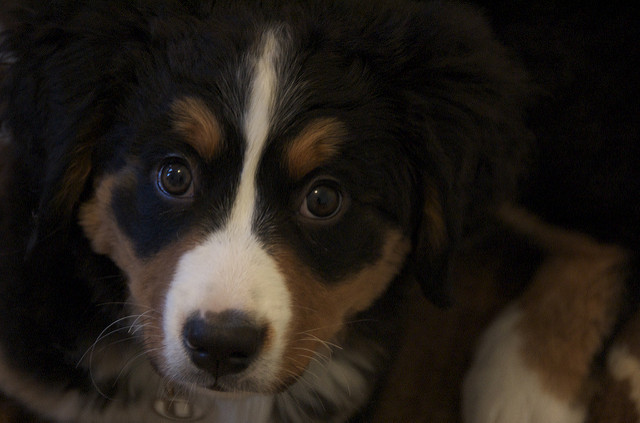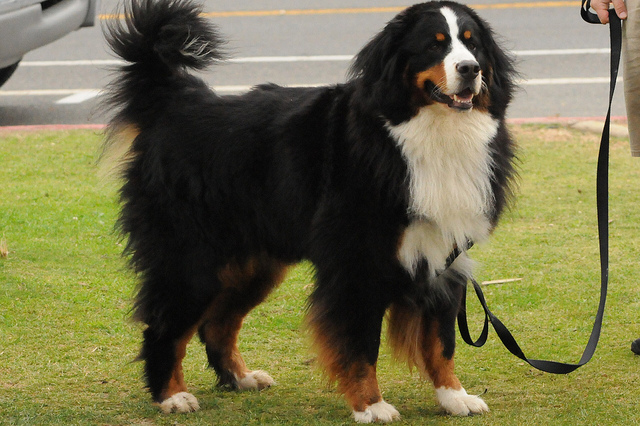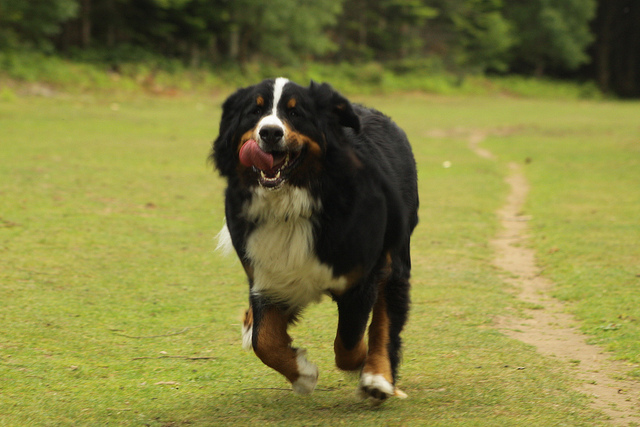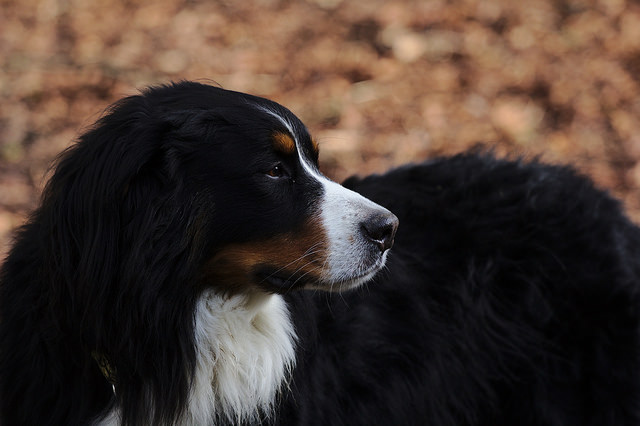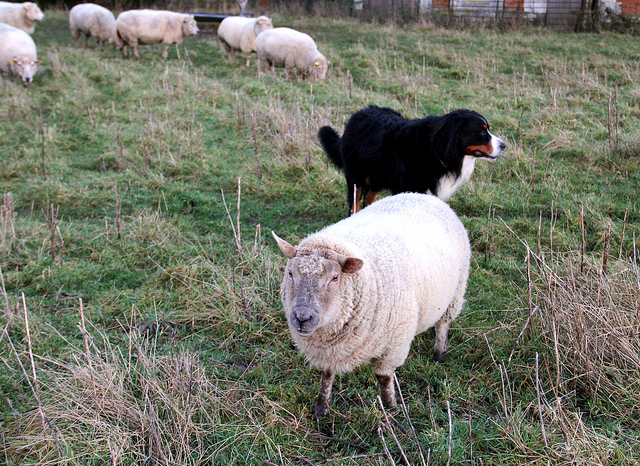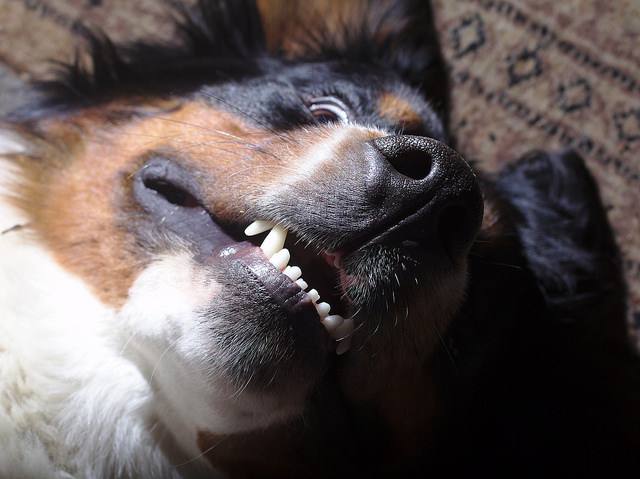The Bernese Mountain Dog, often called the Berner Sennenhund in its homeland, happens to be just one of the mountain dog breeds that have come from Switzerland, although it stands out because of its silky, long coat. Other names this breed is known as include Vieraugen, Gelbbacker, and the Durrbachler. The striking, sturdy breed is still agile and strong enough to do the droving and draft work that it was originally bred to do. Bernese Mountain Dogs are confident, companionable, sensitive, friendly, and watchful, and they do extremely well in colder climates. Since they form such close bonds with humans, they are wonderful family dogs. They are gentle with kids and are aloof with strangers, although they shouldn’t be shy. Here’s a closer look at the breed, their history, working roles, and more.
Origin and History
Bernese Mountain Dogs originate in Switzerland and the breed is just one of several tri-colored varieties from the Swiss mountains, including the Greater Swiss Mountain Dog, the Appenzeller Sennehund, and the Entlebucher Sennenhund. However, the Bernese Mountain Dog has a long coat, which makes it stand out from the other close relatives. These dogs were bred to be watchdogs, farm dogs, and draft dogs. Experts believe that they probably descended from a cross between native flock guard dogs located in the Swiss Alps region and mastiff-type dogs.
For many years, the breed was nearly forgotten by most except for rural inhabitants that lived in Switzerland’s Berne area. Several breed lovers tried looking for good specimens of the dog, and after finding some quality dogs in Switzerland, they started to rebuild this breed once again. In 1907, a specialty club for the breed was first founded, and soon these dogs became highly sought after as companions and show dogs, as well as for their working roles. It wasn’t until 1926 that the breed first came to the United States, and in 1937 the breed was recognized by the American Kennel Club. Later the Bernese Mountain Dog Club of America was created in 1968, and in 1981, the club became a member of the AKC.
Appearance
Bernese Mountain Dogs are strong, compact, and sturdy, and they have wide, deep chests. They have a broad head with a furrow right down the middle, and they boast pendant shaped, triangular ears. Their dark, expressive eyes draw attention to their face, and they have a low hanging, long, bushy tail. This breed has a tricolored, wavy, thick, distinctive coat. The sex of these dogs is usually easy to tell by their appearance, since females are more feminine and soft and males usually have a very masculine air, although both are powerful and strong.
The beautiful coats of the Bernese Mountain Dog really stand out. They have a double coat that features a wavy, long topcoat and a wooly under coat. Usually they are tricolored, although most of the body is covered with black hair, accentuated with beautiful rust colors on the legs, underside of their tail, and over their eyes. Usually they have bright white markings at the tip of the tail, between their eyes, and on their chest.
These dogs are very large, and males are usually 25 to 27.5 inches at their shoulder, while the females are just a bit smaller, standing from 23 to 26 inches at the shoulder. When they are fully mature, they usually weigh from 70 to 115 pounds.
The Bernese Mountain Dog Temperament
This breed loves to be part of a family and they are easy going, affectionate, and sweet. In fact, they are wonderful with children, even small children. The Bernese Mountain Dog has enough energy to enjoy playing all day, yet they are happy to relax by the fire, relaxing with the family.
While Bernese Mountain Dogs enjoy relaxing and taking naps, they do require quite a bit of activity to be happy. They do best in cooler climates, since their long coats makes them uncomfortable in the heat. They love to get out and romp around in the snow, and they need to have plenty of room outdoors to play in. It’s important to socialize these dogs very early or they may end up being anxious, timid, and shy.
When training this breed, it’s important to use a gentle, consistent, and confident hand. Some males may be a bit dominant, but most of these dogs are very docile. They do not respond well to harsh treatment and do best with treats and plenty of positive reinforcement. Since they can be slow to learn and stubborn, it’s important to be very patient with them.
Grooming
Since these dogs have a long, double coat, they do shed throughout the year. However, the heaviest shedding of the Bernese Mountain Dog comes when the seasons change. It’s important to keep them brushed at least once weekly to reduce shedding and keep their coat looking neat. However, during the fall and spring, they may require several brushings each week. Depending on how often they get in the dirt, these dogs usually only need to be bathed every couple of months.
Since their ears have the ability to trap liquid, dirt, and bacteria, they need to have their ears cleaned each week to prevent infections. Teeth should be brushed weekly to prevent bad breath and tartar buildup. In most cases, these dogs wear their toenails down naturally, but if their nails start to make clicking sounds, they should be trimmed.
Working Roles
Originally bred to be farm dogs and used as draft animals, it’s very common for these dogs to be used as working dogs on the farm today. In some areas of the world, they are still used as draft animals as well. However, many people simply appreciate these dogs for their loving personality as a great family pet.
Health
The Bernese Mountain Dog has an average life span of 8 to 11 years. Various breed health concerns exist, including:
- Bloat
- Progressive retinal atrophy
- Arthritis
- Elbow dysplasia
- Hip dysplasia
- Cataracts
- Kidney disease
- Entropion
- Cancer
- Malignant histiocytosis
- Histiocytic sarcoma
- Hypoadrenocorticism
- Osteochrondritis
- Cruciate ligament rupture
- Mast cell tumor
- Fibrosarcoma

